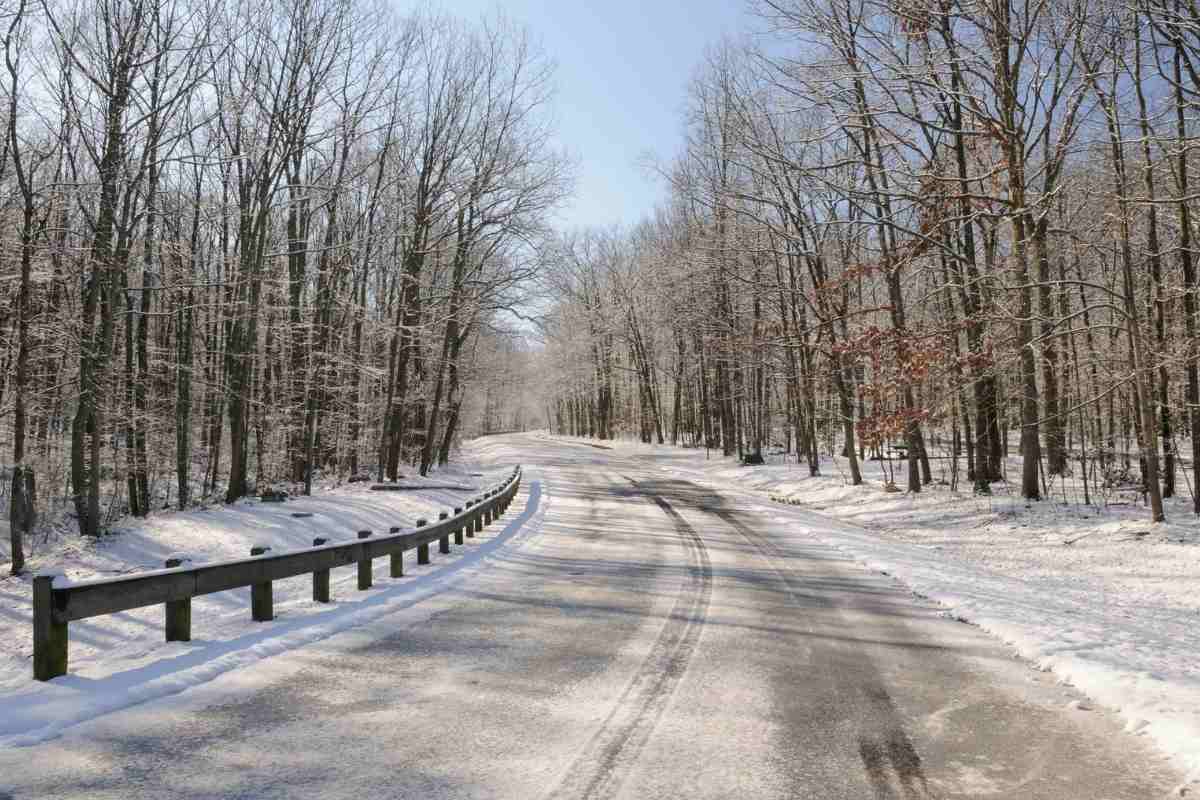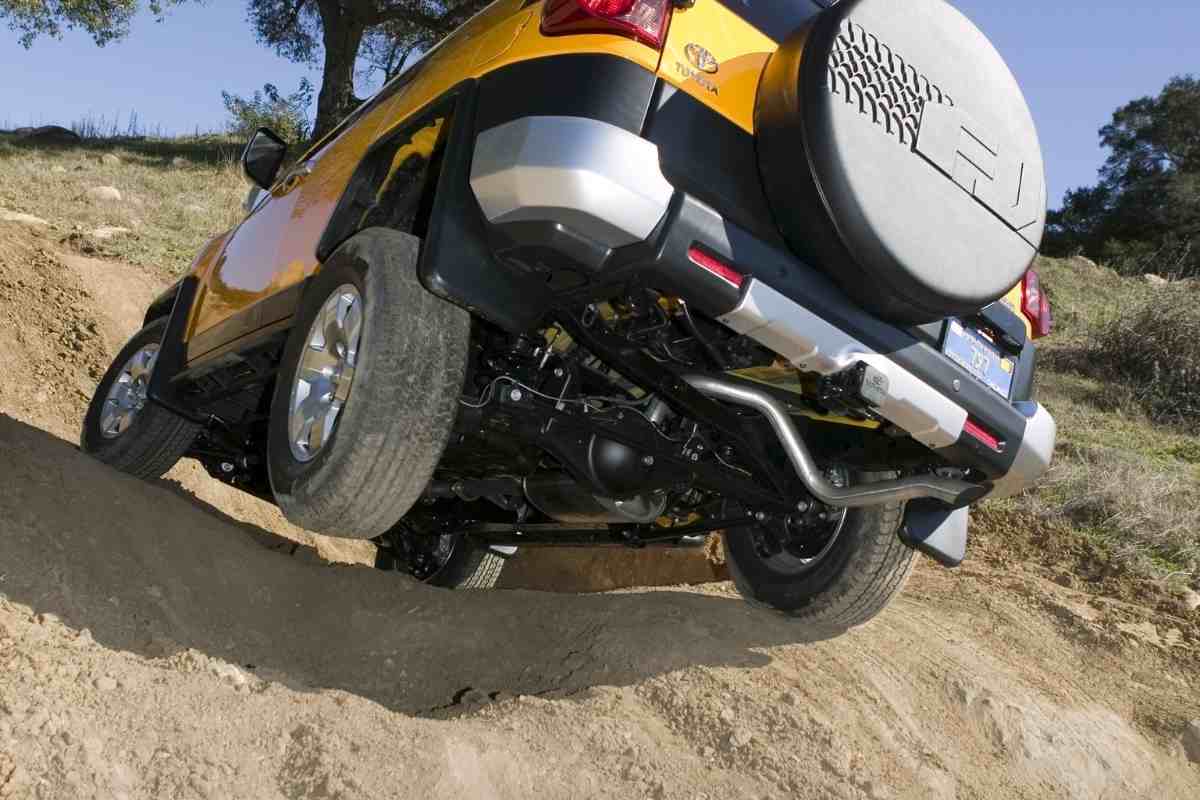Is the Toyota FJ Cruiser Good in Snow?
Depending on where you live, snow is on the way or maybe there are already several inches on the ground. If you are considering the purchase of a Toyota FJ Cruiser, you probably want to know if the FJ Crusier is good in snow.
So is the FJ Cruiser good in snow? Let’s find out.
Is The Toyota FJ Cruiser Good In Snow?
The Toyota FJ Cruiser is a very good vehicle for driving in the snow, offroad, or on dirt roads. The FJ Cruiser is a great four-wheel-drive machine and will make most drivers confident driving during inclement weather.
Comparing the Toyota Fj Cruiser with its rivals, the model is exceptional for its prowess in beating snow-filled roads.
But how does it do it?
This Toyota model is a four-wheel-drive machine. With power in all its wheels, the car will definitely drive out of a snow place.
To add to this, it comes with an independent front suspension that uses the solid axle systems. This in-built feature largely improves vehicle traction. They are versatile axles which are easy to repair and maintain.
Built with features that confer stamina, the Toyota FJ Cruiser is fierce on snow and its tenacity has been tested and proven as the most superior model navigating icy roads. It’s forged to tackle the harsh weather and performs with ease.
What makes a car good for snow?
All-weather tires/ winter tires
Tires are the leading players in managing traction on road surfaces. Tires with low grip are dangerous for wet slippery roads. Heavily treaded and studless vehicle tires are most famous for snow hit roads.
They are made using rubber with micropores that grip onto the tiny pieces of ice and elicit the grip effect. This enhanced feature makes the tires ideal for the weather.
Heated seats
With the temperatures dipping several degrees below and your vehicle covered in ice, it may not be easy to start a frozen car. All-weather cars come with heated seats giving comfort to its passengers.
Heated winter seats warm up fast compared to a heater warming up the vehicle. It is less of an expense using heated seats than using heaters to warm up the car directly. Another plus is that these seats can be adjusted individually depending on the passenger.
Anti-lock braking systems (ABS)
Most braking systems lock the wheels when braking. Now with a braking system that works in this manner on a slippery road can be dangerous because once the wheels lock, they might lock up with ice, and disengaging the car may be problematic.
Sensors are attached to every spin and detect when the wheels are about to lock and keep them from moving. The system then applies just enough braking pressure to keep the wheels from locking, while still braking. Consider vehicles with an electronic braking system. They enhance safety driving on ice.
Engine block heater
To keep your engine warm is crucial, particularly before starting up the car. With the cold temperatures, the oil integrity may change with the oil compacting and reduce viscosity, which can be detrimental for an engine.
The engine heater keeps the engine warm and comes to life the moment the vehicle is ignited.
Remote starter
This gadget helps to keep the vehicle warm.
Traction
It can be understood as the friction between a road surface and the vehicle tires. When a vehicle has good traction, it has a good grip, and this prevents slipping. Traction is achieved when using tires with good grip and traction monitors. The traction monitors detect sideways movements, wheels stability.
When they notice a skid, they bring the wheels to a proper heading. It is also advisable that when stuck, you should shut off the traction control system because they are designed to keep wheels from spinning. It ensures that wheels stay powered keeping you from getting stuck.
All-wheel/ four-wheel drive
They have a smooth run on the ice-decked roads compared to the rest. It is because all four wheels are powered, and it is therefore easy to keep your car from getting stuck. A front-wheel-drive car will have power distributed only to the front wheels.
It can also make it easy for you to utilize your winter tires more effectively while treading on ice packed roads. The all-wheel-drive car systems can detect the wheels experiencing the most traction and power them more. Those that are slipping have power reduced from them.
The functionalities like this alone can go a long way to beat the foul weather.
What can I do to make my Toyota FJ Cruiser Better in Snow?
How winter-ready are you? Here is some stuff you can do to umph your car for the winter;
Buy winter quality tires.

Your average tires won’t beat the snow trodden roads. Consult your car dealership when purchasing your tires. However, remember that the right winter tires need to have a perfect grip.
Pump up tires
It would be best if you were wary of low air pressure, particularly during winter. It doesn’t cost much and therefore isn’t a good enough reason to cause damage and accidents.
Check your battery
When preparing for winter, have your battery checked at your mechanic’s place. Let them check and
Consider an oil change and antifreeze options. An expert mechanic should carry this out. Antifreeze is added to the engine and helps prevent the oil from freezing by reducing the freezing temperature while raising the boiling point.
Can Driving in the Snow bring Damage to My Toyota Fj Cruiser?
Have you ever considered the possibility that driving on snow can be harmful to your car? Well, it has been confirmed that it does. During winter, most countries apply rock salt to deal with the snow on the roads. How does it do that? Rock salt acts as an impurity, which lowers the melting point of ice.
This way, the snow thaws more quickly, and it clears from the roads even faster. Other chemicals applied on roads include magnesium chloride and calcium chloride and are used for de-icing purposes.
How these treatment methods damage your car
The metallic parts of your car are highly susceptible to rust and corrosion. The moist air reacts with the metal, causing rust. Rust risks the possibility of damaging whole parts, which are weakened and eventually fall apart. This is particularly dangerous because these parts happen to be the crucial ones- the brakes, exhaust pipes, and the wheels.
Snow reacts with the car paint as well. With ice melting and the air surrounding the vehicle’s painted body, the paint slowly begins to peel and fall off.
The snow tends to settle on the windshield wipers, which can break under the snow blocks’ weight, but this is on the extreme side. Using windscreen wipers can harm your windscreen. Want to know why? Tiny ice crystals get lounged in between the wipers, and once they are used, they scratch the windshield.
Should I opt for the Toyota FJ cruiser?
The Toyota FJ cruiser is a hardcore, road badass SUV equipped to handle the snow. You know one when you see one. The vehicle boasts impeccable features that make it handy for winter drives.
The model brags perfect view sights from the flat windscreens, which helps drivers dodge the snow bumps and heaps, keeping them from getting stuck altogether.
The high suspended machine with oversized sturdy tires can hardly go unnoticed. The very same features give it its prowess on ice-climbing, sailing through with comfort and ease.

The highly suspended body would prevent the lower parts from coming into close contact with ice unless it snowed heavily last night.
It makes a handy choice for off-road drives. It boasts four-wheel drive features that make it ideal for ice weathered roads. With 4000cc fuel tank capacity, you have enough to go on a drive confident you won’t run out of gas midway with no gas station in hindsight.
Newer models come with the anti-lock brake system featuring an electronic braking force distribution and brake assistance. The good thing is this feature comes included in the package, and you don’t need to incur extra costs to pimp your car with.
With triple edged windscreen wipers, these wipers are built to endure the weight of the snow heaps that pile on the wipers.
It also comes with a dual-zone climate system that plays at temperature and the air-flow direction. The vehicle is comfortable while cruising the desert or chilly winter roads. You can adjust the temperatures within to either beat the heat outside or deal with the biting cold.
Having a car that can be both at the same time would be exactly what one needs.
Is it really as good as it sounds?
The Toyota fj Cruiser is a fantastic choice for foul-weather driving!
Closing Thoughts
Whether you want to do summer off-roading or just need a vehicle to safely get you to and from work during those snowy winter days, the Toyota FJ Cruiser is an excellent vehicle to own for driving inclement weather conditions.
